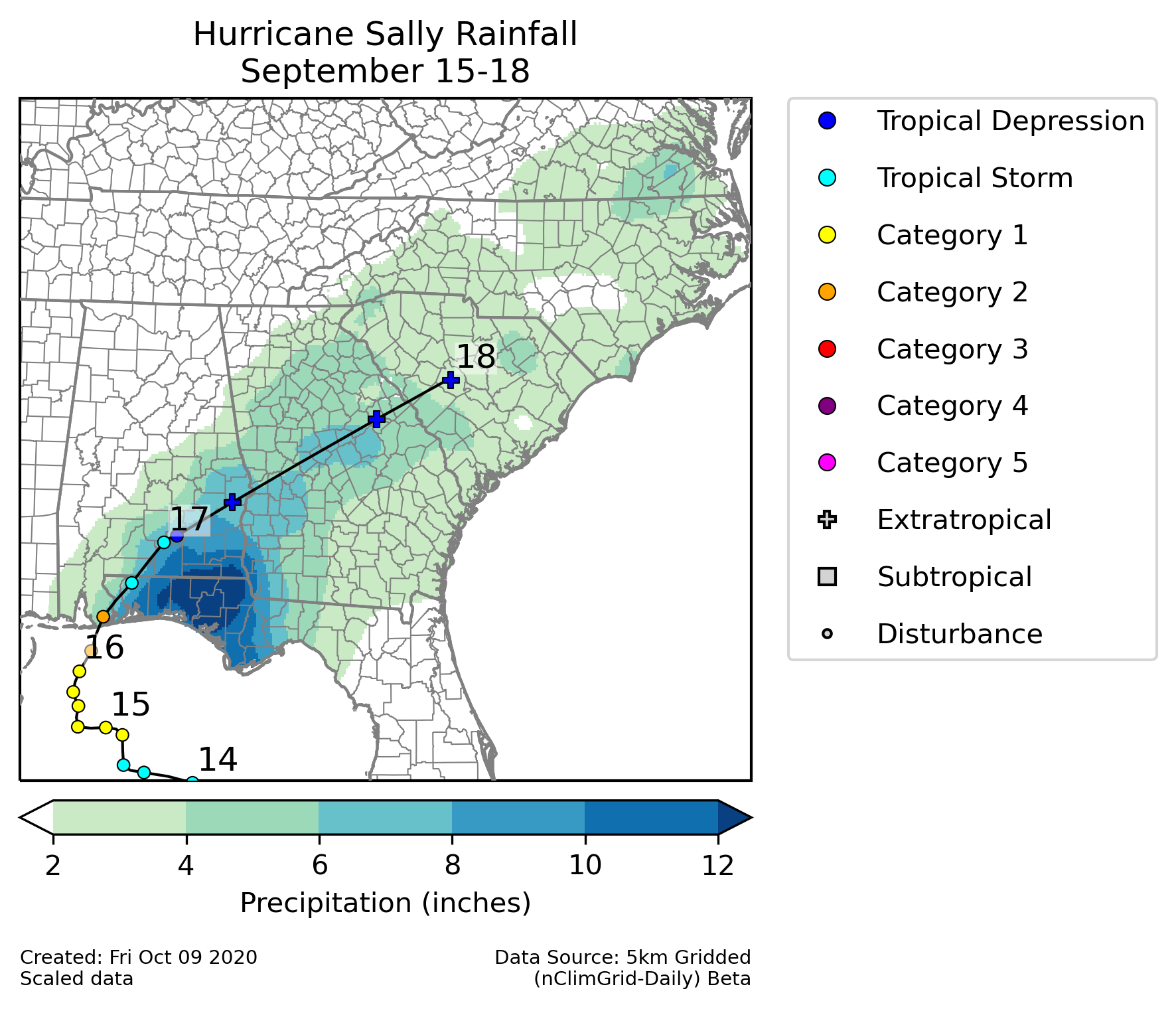Use the form below to select from a collection of monthly summaries recapping climate-related occurrences on both a global and national scale.
Tropical Cyclones ReportSeptember 2020
Significant Events
The Atlantic continued its record-setting pace in September, which is the climatological peak of hurricane season. The 10 named storms that formed in September broke the previous record of eight, which happened in 2002, 2007, and 2010. Five named storms were active on September 14 alone—the first time since 1971 to have that many simultaneously. The season as a whole has produced 23 storms, which puts 2020 six storms ahead of the current record-holder, 2005, through September. However, as has been the case all year, many of the storms in September were weak or short-lived. Four of the ten named storms became hurricanes, but only one, Teddy, became a major hurricane. Similar to the rest of the season, half of the named storms lasted 3 days or less. As a result, the Accumulated Cyclone Energy (ACE), which measures the strength and duration of tropical storms and hurricanes, is about 20-25% above average and just on the cusp of the top one-third of years since 1981 for both September alone and the season as a whole.
Hurricane Teddy was the strongest storm in September and the second major hurricane of the 2020 Atlantic hurricane season. It was a typical Cape Verde hurricane but it recurved northward and largely stayed out to sea until its landfall in Nova Scotia as an post-tropical storm with gale-force winds. Hurricane Sally was the fourth hurricane to make landfall over the contiguous U.S. in 2020. It came ashore in Alabama as a category 2 hurricane and brought heavy rain across the Southeast. The heaviest rain fell in the Florida Panhandle, but totals over 2 inches in four days were observed a swath extending to southeastern Virginia.
In contrast to the Atlantic, the East Pacific has remained unusually quiet in 2020. Four named storms developed during September, which is close to the 1981-2010 average of 3.6. However, none of them attained hurricane strength during the month. Hurricane Marie became a named storm on September 29 but became a hurricane on October 1. The season as a whole remains in the bottom third of years since 1981 for most metrics, and the ACE is less than half of its 1981-2010 mean value through September.
 NOAA's National Centers for Environmental Information
NOAA's National Centers for Environmental Information



